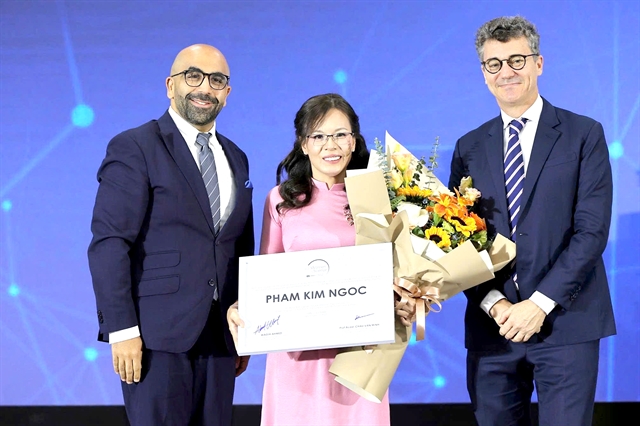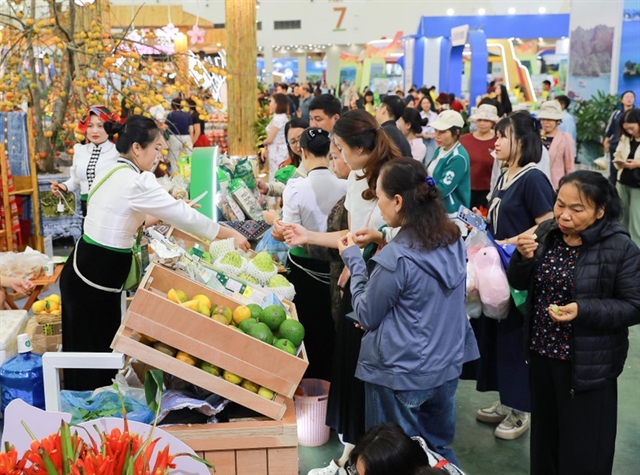 Economy
Economy

 |
| A large number of visitors flock to the booth showcasing Sơn La Province’s signature and specialty products. — VNA/VNS Photo |
HÀ NỘI – More than a trade event, the first Autumn Fair 2025 has become a gateway for craft villages, cooperatives, and small enterprises to move beyond their local markets and connect with urban consumers, international visitors, and modern distribution channels.
Featuring hundreds of booths from thirty-four provinces and cities nationwide, the fair showcases OCOP products, handicrafts, processed foods, and regional specialties.
With the spirit of “connection, spread, and sustainable development”, the event reflects a shift from a traditional sales fair to a genuine trade promotion platform where traditional values meet new market opportunities.
A highlight this year is the exhibition zone for traditional handicrafts, bamboo and rattan products, ceramics, embroidery, and woodwork displayed with refined designs tailored for export.
Hà Nội’s bamboo food covers from Chương Mỹ village, priced from VNĐ450,000 (US$17) to VNĐ750,000 each, quickly sold out thanks to their modern, elegant designs that blend rural tradition with urban aesthetics.
Trần Thị Linh, owner of the Trần Linh Bamboo and Rattan Workshop, noted that participation in the fair had helped her business reach beyond rural markets, with growing interest from urban consumers and even foreign visitors. She considered the event a valuable opportunity to expand sales channels and enhance product design.
Other provinces, including Bắc Ninh, Nam Định, Ninh Bình, Quảng Nam, and Huế, also presented hundreds of OCOP-rated products that demonstrate innovation in packaging, labeling, and branding, showcasing the growing business mindset of Vietnamese craft producers.
Food remains one of the most effective “soft ambassadors” of local trade promotion. Over fifty food booths drew thousands of visitors daily. Among them, Mão Điền steamed rice rolls from Bắc Ninh stood out as a symbol of successful household branding — offering visitors both culinary delight and insight into the village’s culture.
The fair also facilitated dozens of business-matching sessions and cooperation agreements between producers, supermarkets, and e-commerce platforms. Many cooperatives signed deals to supply products to large retail chains.
More importantly, the fair reinforced consumer trust in domestic goods through direct product experiences. Many exhibitors adopted digital tools such as QR codes for product traceability, cashless payments, and live-streamed sales sessions — demonstrating a clear transition towards modern, professional business models.
Workshops on packaging design, brand registration, and quality certification also equipped producers with practical knowledge for sustainable development.
From a VNĐ50,000 rice roll to a VNĐ700,000 bamboo cover, every item tells the same story, Vietnamese craft products can thrive in broader markets when presented properly. The fair attracted tens of thousands of visitors, hundreds of transactions, and strong media coverage, creating a dual impact in both economy and communication.
For consumers, it offered authentic, traceable products; for producers, it became a launchpad to build confidence and brand identity.
The success of the first Autumn Fair 2025 demonstrates that beyond supportive policies, what truly empowers Vietnamese goods is creating practical, well-organised platforms for connection and promotion, helping craft villages transform small booths into big ambitions. — VNA/VNS

.jpg)
.jpg)
.jpg)
